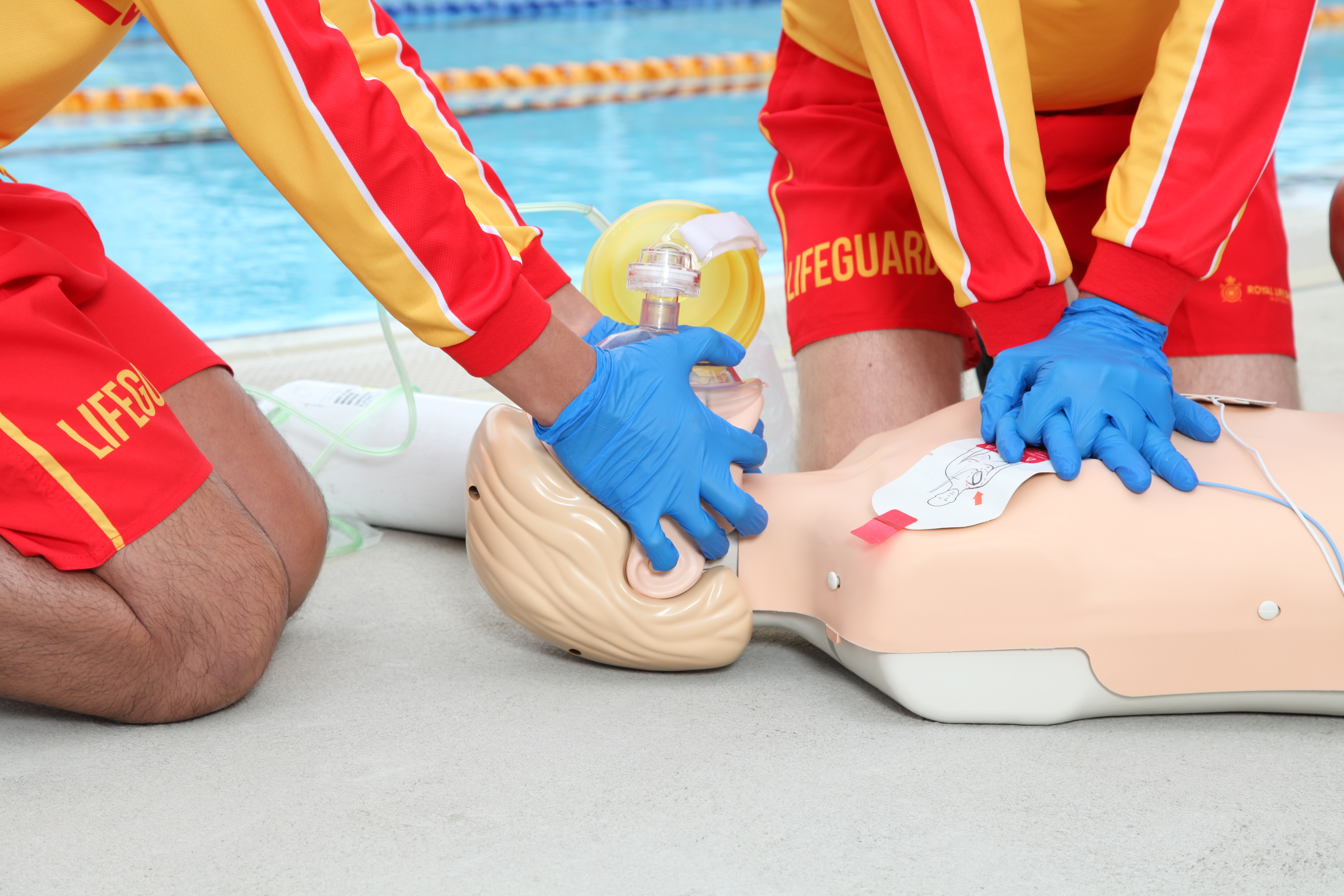
POSITION STATEMENT ON RESCUE BREATHS AND HAND CONTACT DURING COMPRESSIONS
Issue Date: This position is current at 9 September, 2025
Version: 1.0 (current as of 9 September, 2025)
Background and Scope
Royal Life Saving Society – Australia (RLSSA) has become aware of information that may cause uncertainty regarding best practice in providing rescue breaths and maintaining hand contact while performing chest compressions during cardiopulmonary resuscitation (CPR). This position statement sets out RLSSA’s position on these matters for trained first responders, e.g. pool lifeguards, to ensure consistency with current evidence-based guidelines and industry best practice.
1. Provision of Rescue Breaths
Rescue breaths should be provided during CPR unless conditions make it unsafe. In cases of suspected drowning, where oxygen deprivation (hypoxia) is the primary issue, Royal Life Saving recommends that trained rescuers, such as pool lifeguards, deliver two initial rescue breaths before commencing cycles of 30 chest compressions and 2 rescue breaths.
2. Hand Contact During Compressions
When performing chest compressions, rescuers should maintain continuous hand contact with the chest throughout the sequence, including at the top of the chest recoil. Full chest recoil must occur with each compression, but the hands should remain in contact without applying pressure.
Further Information
- In cases of suspected drowning, compression-only CPR is strongly discouraged; rescue breaths (ventilations) are required to provide oxygen immediately to correct hypoxia.
- A significant proportion of unconscious casualties extracted from the water still have a beating heart; these casualties require oxygen via rescue breaths immediately.
- The 2021 ILCOR Basic Life Support Consensus on Science with Treatment Recommendations advises that trained rescuers and those with a duty to respond, such as lifeguards, should begin resuscitation for drowning with rescue breaths (ABC sequence) before commencing chest compressions, due to the hypoxic nature of drowning-related cardiac arrest.[1]
- The 2024 American Heart Association and American Academy of Pediatrics Focused Update on Special Circumstances: Resuscitation Following Drowning supports that trained rescuers initiate drowning CPR with two rescue breaths before compressions[2].
- Effective chest compressions with minimal interruptions are essential for high quality CPR. Each downward push should compress the chest to a depth of approximately one third. During chest recoil, light hand contact without pressure should be maintained.
- Avoid residual pressure during recoil, as even slight pressure can reduce blood flow back into the heart and restrict circulation to the heart muscle.
- In the training environment, trainers should stress the importance of leaving the hands in position but releasing pressure during chest recoil.
References
- International Liaison Committee on Resuscitation (ILCOR). 2021. Basic Life Support: CAB or ABC in Drowning (BLS 856) – Consensus on Science with Treatment Recommendations. Available at: https://costr.ilcor.org/document/cab-or-abc-in-drowning-bls-856-tf-systematic-review (cited 13 August 2025).
- American Heart Association and American Academy of Pediatrics. 2024. Focused Update on Special Circumstances: Resuscitation Following Drowning: An Update to the American Heart Association Guidelines for Cardiopulmonary Resuscitation and Emergency Cardiovascular Care. Pediatrics, 154(6): e2024068444. Available at: https://publications.aap.org/pediatrics/article/154/6/e2024068444/199870 (cited 13 August 2025)
Disclaimers:
This position must be considered in the context of RLSSA’s role as an Australian peak water safety body, with a core focus on community safety, promotion of first aid and pool lifeguard training, drowning prevention, and safe aquatic participation. It is not legal advice but provides industry guidance based on current legislation, standards, and best practice.
Royal Life Saving Society – Australia recognises the Australian Resuscitation Council (ANZCOR Guidelines) as the peak authority on first aid and resuscitation best practice. Royal Life Saving aligns our programs, practices and advice with ANZCOR wherever relevant.
